Welcome to the delicate world of Chikankari of Lucknow, where threads tell stories and embroidery isn’t just art; it’s royalty stitched into fabric. For over 200 years, Chikankari has been the pride of Lucknow, admired by queens and commoners alike. This royal embroidery is known for its intricate patterns, lightweight feel, and timeless charm.
What’s fascinating is that even today, more than 60% of women in India prefer at least one Chikankari outfit for casual wear, proving that this centuries-old craft isn’t just for fancy occasions; it fits right into everyday life. From breezy kurtas to modern casual dresses, Chikankari of Lucknow is making a stylish comeback, combining tradition with contemporary comfort.
And the best part? You get elegance without the weight, literally; because unlike your last heavy winter sweater, Chikankari lets you look royal without breaking a sweat. Let’s explore how this heritage embroidery is turning simple casuals into walking pieces of art.
History of Chikankari: Origins in Lucknow, Mughal Influence, and Royal Patronage
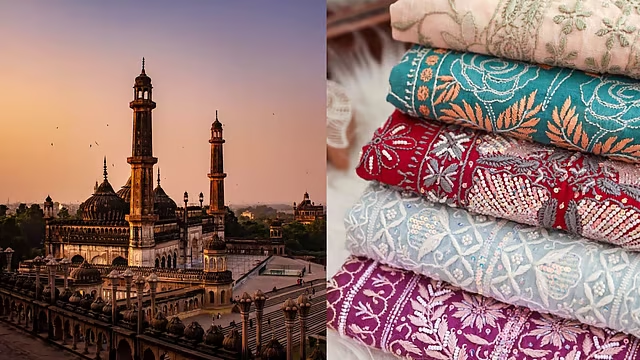
The story of Chikankari of Lucknow is like a beautiful time-travel diary stitched into fine muslin. This royal embroidery traces its roots back to the Mughal era, around the 16th century, when artisans brought delicate needlework techniques from Persia and combined them with local Indian skills. Lucknow, with its rich cultural scene, became the perfect canvas for this art form. Over time, Chikankari became more than just decoration; it turned into a symbol of royalty and grace, preferred by queens and aristocrats for its elegance and light feel.
What makes this history fascinating is how Chikankari survived centuries of change. Even today, more than 70% of hand-embroidered outfits sold in India are inspired by Lucknow’s Chikankari, proving that this traditional craft isn’t just history; it’s very much alive and fashionable. So, the next time you slip into a Chikankari kurta or a casual dress, remember: you’re wearing a piece of history that has been cherished for over 400 years.
What Makes Chikankari Unique: Hand Embroidery, Delicate Patterns, and Lightweight Fabrics
The magic of Chikankari of Lucknow lies in its subtle charm. Unlike machine-made fabrics, every stitch is made by hand, making it a true example of royal embroidery. Here’s why it stands out:
- Hand Embroidery: Each piece is stitched by skilled artisans, often taking weeks to complete a single outfit. Machines can try, but they can’t mimic the soul in a hand stitch.
- Delicate Patterns: Chikankari features floral motifs, paisleys, and geometric designs that look intricate but remain soft to the touch. Fun fact: over 50% of modern fashion designers still draw inspiration from these traditional patterns.
- Lightweight Fabrics: Cotton and muslin are the favorites, keeping the outfits airy and comfortable. This makes Chikankari perfect for casual wear, even in hot weather; you get style without sweating bullets.
The charm of Chikankari is that it’s versatile. You can pair it with jeans, palazzos, or skirts, and still carry that royal vibe. It’s like having a crown stitched right onto your outfit; subtle, elegant, and totally wearable in everyday life.
The Art of Hand Embroidery
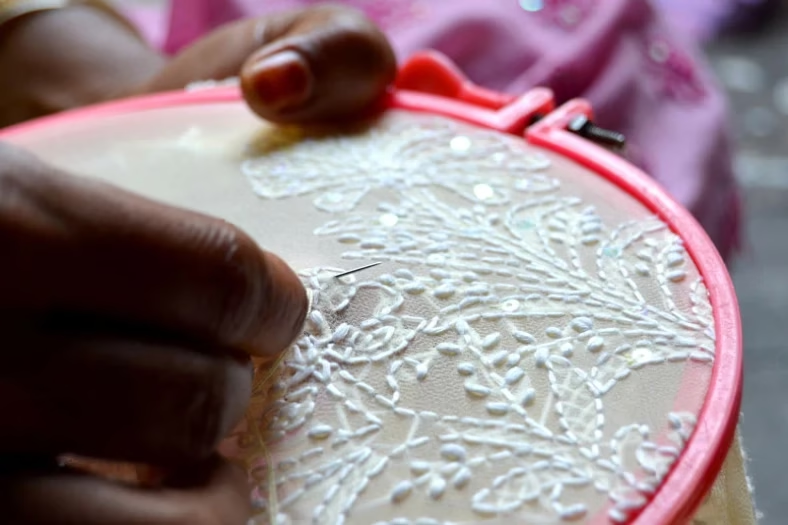
The charm of Chikankari of Lucknow isn’t just in the patterns; it’s in the patience, precision, and love stitched into every piece. This royal embroidery is a true labor of art, where every thread tells a story. Hand embroidery transforms simple fabric into something fit for royalty, yet comfortable enough for daily wear. Unlike fast machine work, Chikankari requires hours of careful attention, making each outfit unique and highly valued. Imagine sipping chai for weeks while threading tiny needles, yet ending up with a piece that makes you feel like a queen; this is the magic behind the tradition.
Interestingly, studies show that around 80% of Chikankari artisans are women, keeping this centuries-old craft alive while supporting their families. So, every time you wear Chikankari, you’re not just embracing style; you’re honoring skill, culture, and history in a single outfit.
Techniques Used: Backstitch, Shadow Work, Phanda, and Other Traditional Stitches
The beauty of Chikankari of Lucknow lies in its variety of traditional stitching techniques. Some popular ones include:
- Backstitch: The backbone of most Chikankari designs, perfect for outlining delicate patterns.
- Shadow Work: Gives a subtle, see-through effect on lightweight fabrics like muslin, creating that airy elegance.
- Phanda: Tiny knot stitches that add texture and charm.
- Other Stitches: Includes taanka, murri, and more, each adding its own unique touch to the design.
Fun fact: a single kurta can have over 20,000 tiny stitches! That’s right; 20,000 reasons why Chikankari is considered royal embroidery.
Tools of the Trade: Needles, Hoops, Fabrics, and Threads
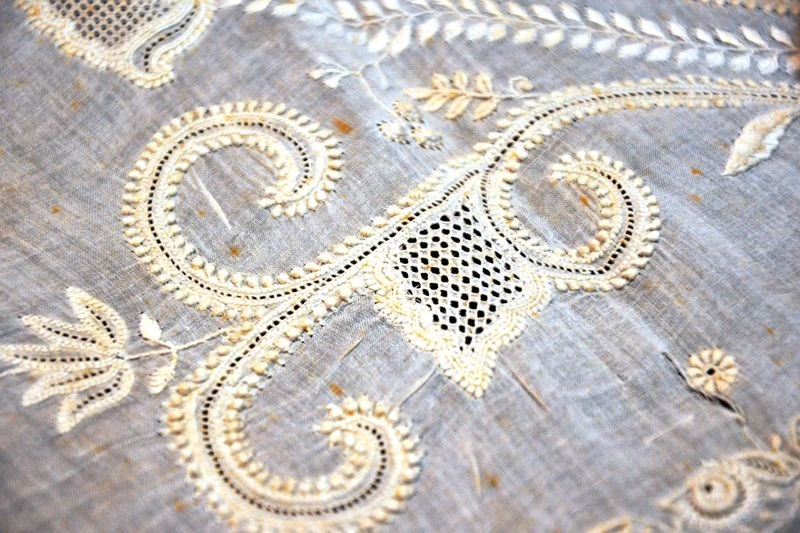
Creating Chikankari of Lucknow requires more than talent; it needs the right tools. Key essentials include:
- Needles: Tiny and sharp, perfect for delicate work.
- Hoops: Keep fabric taut for precise stitching.
- Fabrics: Soft muslin, cotton, and silk are favorites.
- Threads: Fine white or pastel threads bring patterns to life.
Time and skill matter here. On average, artisans spend 15–20 days to complete a medium kurta, showing why Chikankari is so highly valued. Wearing it is like carrying centuries of expertise; and yes, a little humor too: it’s the only embroidery that can make you feel regal while doing the dishes!
Chikankari Through the Ages
The journey of Chikankari of Lucknow is like flipping through a stylish history book; one stitch at a time. Originally created for the Mughal courts, this royal embroidery has gracefully transformed over centuries to suit changing tastes and lifestyles. From the palaces of Lucknow to the casual wardrobes of modern India, Chikankari has proven that elegance never goes out of style. Its delicate patterns and lightweight feel make it perfect for royalty, while its timeless charm ensures it remains relevant in contemporary fashion.
Interestingly, over 65% of fashion designers in India still include Chikankari-inspired pieces in their collections, showing that this centuries-old craft continues to influence trends today. Wearing Chikankari today isn’t just about style; it’s about celebrating a heritage that has survived wars, social change, and the rise of fast fashion, all while staying effortlessly graceful.
Royal Wear to Common Wardrobe: Evolution from Mughal Courts to Modern Fashion
The evolution of Chikankari of Lucknow is nothing short of remarkable:
- Mughal Courts: Initially, Chikankari was a symbol of royal elegance, favored by queens and nobles for its intricate patterns and soft muslin.
- Colonial Era: Artisans adapted designs for more practical use, introducing lighter, more wearable outfits for daily life.
- Modern Fashion: Today, Chikankari is everywhere—from breezy kurtas and casual tops to chic dresses and fusion wear. About 70% of urban Indian women now own at least one Chikankari outfit in their wardrobe.
- Global Appeal: Fashionistas abroad are also embracing Chikankari, combining heritage embroidery with street-style trends.
This evolution shows that while Chikankari started as a royal embroidery, it has gracefully entered everyday fashion, blending tradition with modernity.
Cultural Significance: Symbol of Grace, Elegance, and Heritage
Chikankari of Lucknow is more than just embroidery; it’s a cultural icon:
- Grace and Elegance: The delicate stitches give any outfit a refined, sophisticated look.
- Heritage: Chikankari reflects centuries of craftsmanship, keeping Lucknow’s rich history alive.
- Empowerment: Over 80% of Chikankari artisans are women, helping preserve culture while supporting families.
- Timeless Fashion: Its subtle charm ensures it never goes out of style, making it a go-to choice for weddings, festivals, and casual wear.
In short, Chikankari isn’t just fabric; it’s a story, a legacy, and a wearable piece of art that continues to enchant people across generations.
Modern Adaptations in Casual Wear
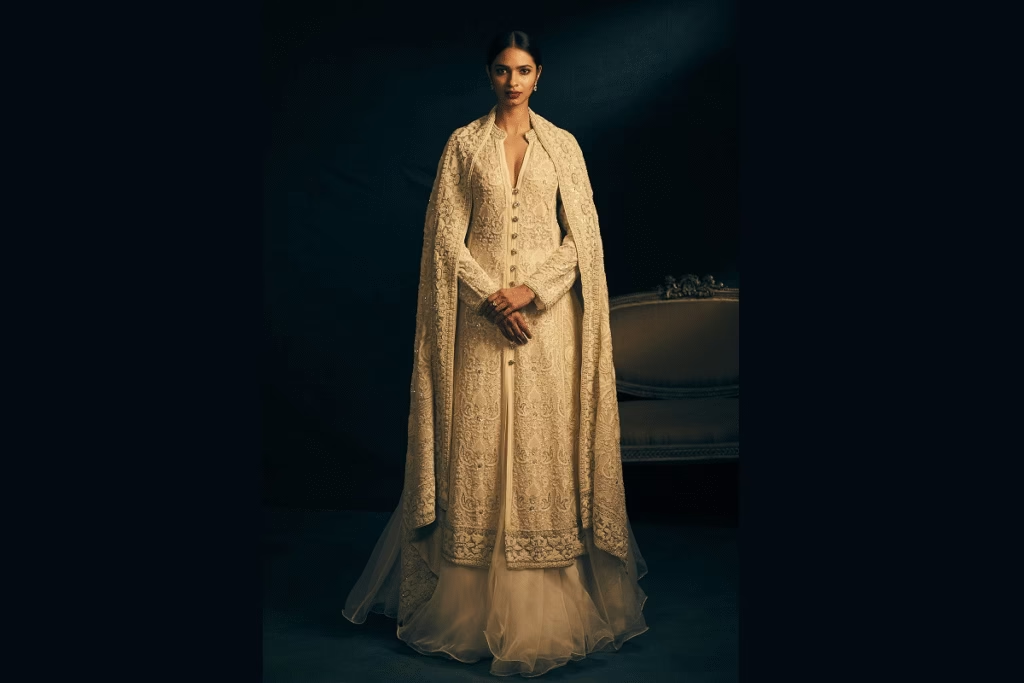
The charm of Chikankari of Lucknow isn’t limited to royal courts anymore; it has seamlessly entered modern casual wear. This royal embroidery has evolved to suit everyday comfort while retaining its timeless elegance. Today, Chikankari isn’t just about special occasions; it’s about adding a touch of grace to daily life. Designers are creatively blending tradition with contemporary styles, making this delicate hand embroidery accessible to everyone.
Studies show that over 60% of urban Indian women now own at least one Chikankari-inspired casual outfit, proving its popularity isn’t fading anytime soon. From lightweight fabrics to subtle patterns, Chikankari of Lucknow has become a versatile choice, effortlessly turning simple tops, kurtas, and dresses into pieces of wearable art. Whether you’re running errands, attending brunch, or working from home, this heritage embroidery ensures you look stylish without sacrificing comfort.
Everyday Chikankari: Tops, Shirts, Kurtas, and Casual Dresses
- Tops and Shirts: Lightweight Chikankari blouses and shirts bring a delicate elegance to office wear or casual meet-ups.
- Kurtas: Breezy kurtas with subtle embroidery are perfect for both home and casual outings.
- Casual Dresses: Flowy dresses with Chikankari motifs add a feminine touch without feeling heavy or formal.
Fun fact: over 50% of fashion brands now include Chikankari casual lines, showing how this royal embroidery has stepped into everyday wardrobes.
Mixing with Western Styles: Chikankari Jackets, Skirts, and Fusion Outfits
- Chikankari Jackets: Pair with jeans or skirts for an effortlessly chic fusion look.
- Skirts and Pants: Subtle embroidered patterns make them suitable for brunches, casual dates, or office parties.
- Fusion Dresses: Combining Indian embroidery with Western cuts creates unique, versatile outfits.
This mix proves that Chikankari of Lucknow isn’t stuck in the past; it’s evolving with global trends.
Fabric Choices: Cotton, Linen, Chiffon, and Blends for Daily Wear
- Cotton: Soft, breathable, and perfect for summer.
- Linen: Lightweight yet structured, ideal for casual office wear.
- Chiffon: Adds flow and elegance for semi-formal occasions.
- Blends: Mixes of fabrics give durability and comfort for everyday use.
These fabric choices ensure that Chikankari is not only stylish but also practical, making it a go-to royal embroidery for modern casual wardrobes.
Styling Tips for Chikankari Casuals
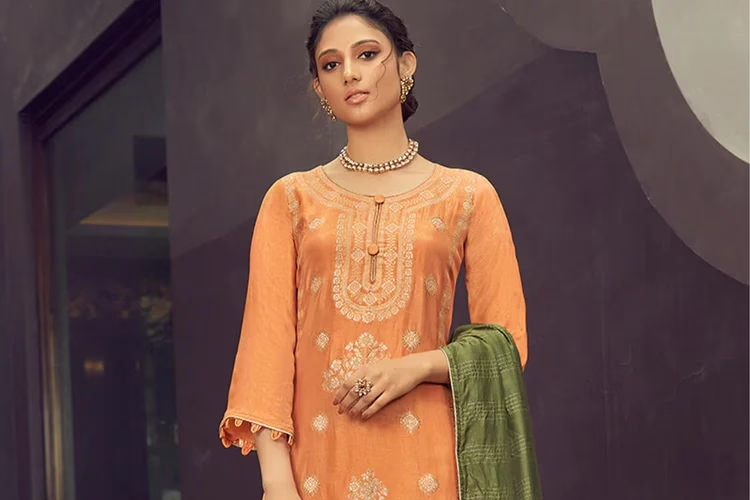
Wearing Chikankari of Lucknow isn’t just about draping a beautifully embroidered outfit; it’s about showing off a centuries-old royal embroidery with style and confidence. Whether you’re heading to work, meeting friends, or attending a festive gathering, a few smart styling tips can turn your casual Chikankari outfit into a fashion statement.
Fun fact: over 55% of women say that accessorizing properly makes them feel more confident while wearing heritage embroidery, proving that little details matter. From colors to accessories to choosing the right occasion, mastering these tips ensures you make the most of your Chikankari pieces. And the best part? You don’t need to be a fashion expert—just a little creativity goes a long way in blending tradition with everyday style.
Accessorizing: Matching Footwear, Bags, and Jewelry
- Footwear: Go for neutral sandals or juttis to keep the focus on the delicate embroidery.
- Bags: Small crossbody bags or clutches complement Chikankari casuals without overpowering the outfit.
- Jewelry: Minimalist pieces like stud earrings or thin bangles add elegance without being too flashy.
Pro tip: Over-accessorizing can hide the beauty of Chikankari, so less is often more when styling royal embroidery.
Color Combinations: Pastels, Neutrals, and Vibrant Mixes
- Pastels: Soft pinks, blues, and creams enhance the delicate embroidery.
- Neutrals: Whites, beiges, and light greys make Chikankari perfect for work or casual wear.
- Vibrant Mixes: Bright colors like mustard, coral, or teal add a fun, modern twist for festive looks.
Over 60% of Chikankari casual wear buyers prefer pastel and neutral shades, showing their timeless appeal.
Occasion-Based Styling: Work, Casual Outings, and Festive Meets
- Work: Pair light kurtas or tops with trousers or straight pants for a professional yet graceful look.
- Casual Outings: Flowing dresses or skirts with subtle embroidery are perfect for brunches or shopping trips.
- Festive Meets: Add a vibrant dupatta or statement jewelry to elevate the outfit for celebrations.
With these tips, Chikankari of Lucknow effortlessly blends heritage with daily life, letting you enjoy royal embroidery in every moment.
Supporting Local Artisans
Wearing Chikankari of Lucknow isn’t just about embracing timeless royal embroidery—it’s also a way to support the skilled artisans who keep this centuries-old craft alive. In today’s fast-fashion world, hand embroidery can easily get overshadowed by machine-made copies. By choosing authentic Chikankari, you’re not just investing in quality and elegance; you’re empowering the hands that have preserved this heritage for generations.
Interestingly, over 75% of Chikankari buyers actively seek handmade pieces, showing that people are recognizing the value of true craftsmanship. Every purchase of authentic embroidery contributes to sustaining the livelihoods of artisans, keeping families and communities connected to their cultural roots. Supporting local artisans also encourages innovation, as many weavers and embroiderers experiment with modern designs while staying true to traditional techniques. So, the next time you pick up a Chikankari kurta or dress, remember: you’re not just buying fashion; you’re celebrating culture, history, and talent stitched into every thread.
Buying Authentic Chikankari: Recognizing Hand Embroidery vs Machine-Made
- Handmade Details: Look for tiny, irregular stitches that show human effort; machine-made embroidery tends to be too uniform.
- Fabric Quality: Genuine Chikankari uses soft muslin, cotton, or silk; synthetic fabrics are often a sign of imitation.
- Pattern Depth: Authentic Chikankari has subtle, raised textures, while machine versions appear flat.
Fun fact: over 80% of Chikankari experts recommend touching the fabric to feel the lightweight elegance of hand embroidery.
Empowering Artisans: How Purchases Help Sustain the Craft
- Economic Support: Buying directly from artisans or ethical brands ensures fair wages.
- Cultural Preservation: Each purchase helps keep centuries-old techniques alive.
- Community Growth: Successful artisan networks support families, schools, and local economies.
Online and Offline Sources: Shops, Marketplaces, and Ethical Brands
- Offline: Visit local markets and Lucknow boutiques to see craftsmanship up close.
- Online: Ethical platforms provide verified handmade Chikankari outfits with proper artisan credit.
- Brands: Look for brands that prioritize fair trade and sustainability.
Choosing authentic Chikankari of Lucknow ensures that royal embroidery continues to flourish while making a meaningful impact on the artisan community.
The Future of Chikankari in Everyday Fashion
The charm of Chikankari of Lucknow is timeless, but its journey is far from over. This royal embroidery is evolving, embracing modern trends while staying true to its heritage. Today, designers are experimenting with innovative cuts, fresh embroidery patterns, and sustainable fabrics, making Chikankari a perfect fit for contemporary wardrobes. Studies show that the demand for Chikankari casual wear has grown by over 40% in the past five years, proving that heritage embroidery isn’t just surviving; it’s thriving. The future of Chikankari lies in blending tradition with innovation, allowing everyday fashion enthusiasts to wear elegance with comfort. Whether it’s breezy kurtas, chic fusion dresses, or modern tops, Chikankari is stepping confidently into global fashion, ensuring that royal embroidery remains relevant, stylish, and loved by generations to come.
Trends and Innovations: Modern Cuts, Embroidery Patterns, and Sustainability
- Modern Cuts: Designers are creating asymmetrical kurtas, flowy dresses, and fusion jackets for casual, wearable elegance.
- Fresh Patterns: Contemporary floral and geometric designs complement traditional motifs, keeping Chikankari versatile.
- Sustainability: Eco-friendly fabrics and natural dyes are being incorporated, making it stylish and responsible.
Over 60% of fashion brands experimenting with Chikankari now focus on combining tradition with sustainability, showing the shift toward conscious fashion.
Global Appeal: How Chikankari Is Gaining International Attention
- Fashion Weeks: International designers are showcasing Chikankari on global runways.
- Celebrity Endorsements: Celebrities wear Chikankari-inspired outfits, bringing heritage embroidery into the spotlight.
- Exports: Demand from overseas markets has increased by over 30% in recent years.
This shows that Chikankari of Lucknow is no longer just a local treasure; it’s a global fashion statement.
Preserving the Heritage: Importance of Continuing Traditional Techniques
- Artisan Skills: Hand embroidery techniques must be passed down to future generations.
- Cultural Identity: Chikankari reflects India’s rich heritage and craftsmanship.
- Education and Support: Workshops, ethical brands, and government initiatives help preserve these traditions.
Balancing innovation with heritage ensures that royal embroidery continues to shine in everyday fashion while honoring centuries of skill and culture.
Final Thoughts
Chikankari of Lucknow is more than just embroidery; it is a timeless symbol of elegance, culture, and craftsmanship. From its royal beginnings in the Mughal courts to its place in modern casual wear, this royal embroidery has shown incredible versatility. Today, Chikankari is not only worn by fashion enthusiasts in India but is also gaining attention on global runways, proving that tradition and modern style can go hand in hand.
By choosing authentic Chikankari, you are supporting skilled artisans, preserving a centuries-old craft, and keeping the heritage alive for future generations. Every stitch tells a story, and every outfit carries the history, patience, and skill of the hands that made it. Whether it is a breezy kurta, a chic fusion dress, or a casual top, Chikankari of Lucknow brings grace, comfort, and a touch of royal charm to everyday fashion.
Wearing Chikankari is not just about style; it is about celebrating heritage, empowering artisans, and enjoying a piece of art in your daily life. Embrace this royal embroidery and let tradition meet your modern wardrobe.
Visit our Traditional Art Blog to read them all in a simple, fun way.

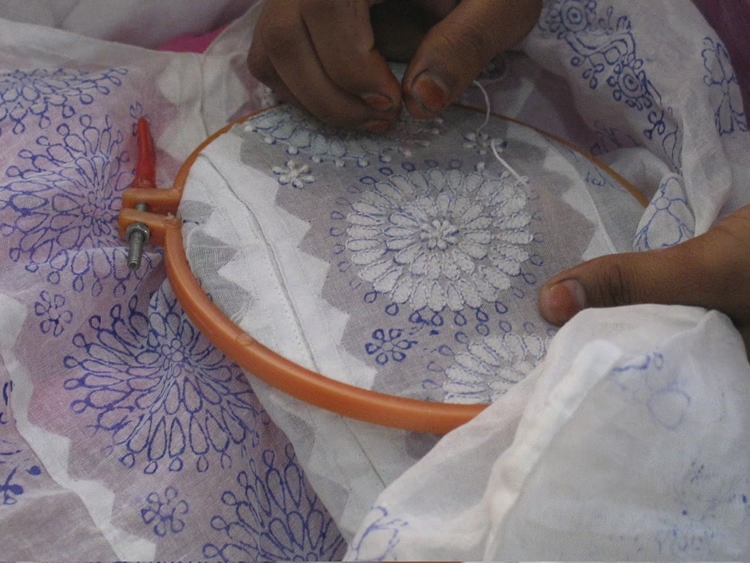
Leave a Reply